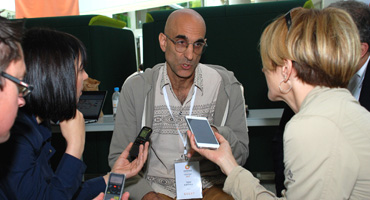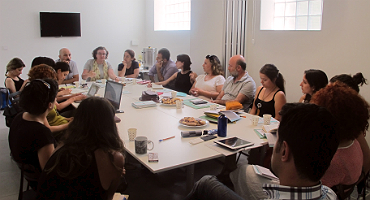On Saturday, September 21, 15 academics from 13 universities, a representative from a non-governmental organization and two students from Beykent and Marmara Universities attended a workshop at the Friedrich Naumann Foundation. The workshop was held by the Hrant Dink Foundation within the scope of its Media Watch on Hate Speech project. The workshop began with a presentation by moderator Gülesin Nemutlu on the theoretical foundations of educational techniques for different learning styles.
At the previous workshop, called “Discrimination, Hate Speech and Media” and held within the Media Watch on Hate Speech, academics focused on which methods could be used during potential classroom conflicts in a proposed university-level curriculum. So at this workshop, Nemutlu presented sample methods that could be used in courses on human rights. Teachers attending the workshop shared their own experiences.
During the first session, individual learning styles were determined based on answers to a questionnaire that was given to participants. Groups were formed for those who displayed activist, reflective, theoretical or pragmatic learning styles. Each group agree on the common learning traits that it possessed, then shared those with the other groups. From this starting point, educational applications took these four learning styles into account.
The second part of Nemutlu’s presentation looked at a classroom scenario. Nemutlu explained that while there are different learning styles, learning still takes place within a certain cycle. She described this process as experimental, contemplation, generalization and implementation. The learning process includes experimental learning, peer-group approaches, process-centred learning and participant-centred learning styles. She emphasized how the contributions of the classroom, the teacher’s subject, the student’s objective can be encouraged.
After a session in which various methods and experiences on how students participate in class were shared, there was the “take a step forward” exercise on ensuring mutual empathy. Participants adopted roles assigned to them on cards, and when they correctly answered questions based on traits possessed by that character, they took one step forward.
This activity encourages empathy for those with different lifestyles, and each participant described how he or she fictionalized his or her role and character, what he or she felt, and how until now he or she had or hadn’t associated with the character. This was presented as a participatory exercise to use in the classroom when teaching how discrimination is practiced, and those academicians with experience on this described its advantages and disadvantages.
In a session that discussed how varieties of media discourse are used, a video with four pieces of music showed how perceptions can be manipulated to completely transform a film’s meaning and theme. Tense music gives viewers the perception that something bad is about to happen, while soft and calm music connotes a positive flow in the film.
A similar exercise was conducted using advertising banners. There was a debate on how advertising themes have changed little between the 1960s and the 2000s and, using gender as an example, how those themes have helped shape social perceptions. This method was presented as a participatory exercise that could be implemented in the classroom.



